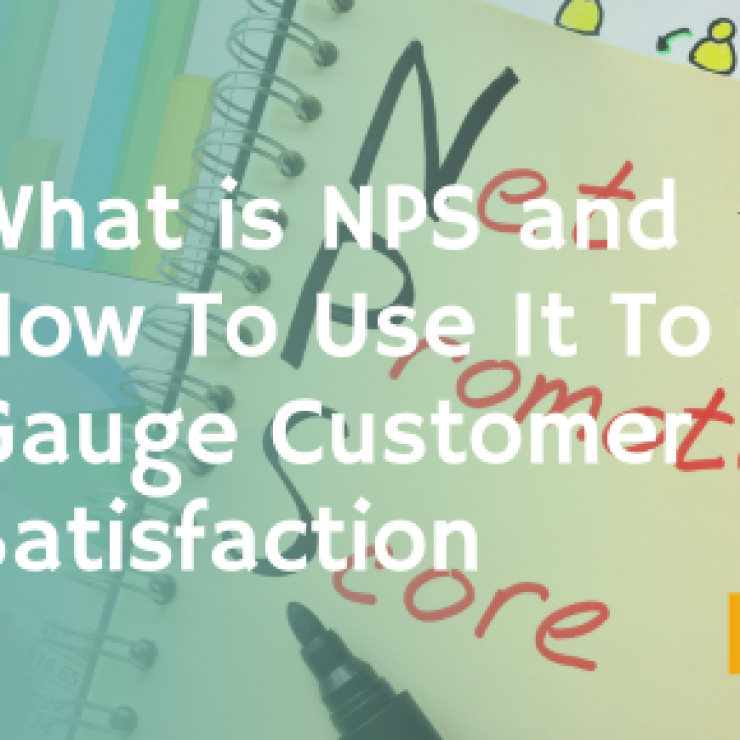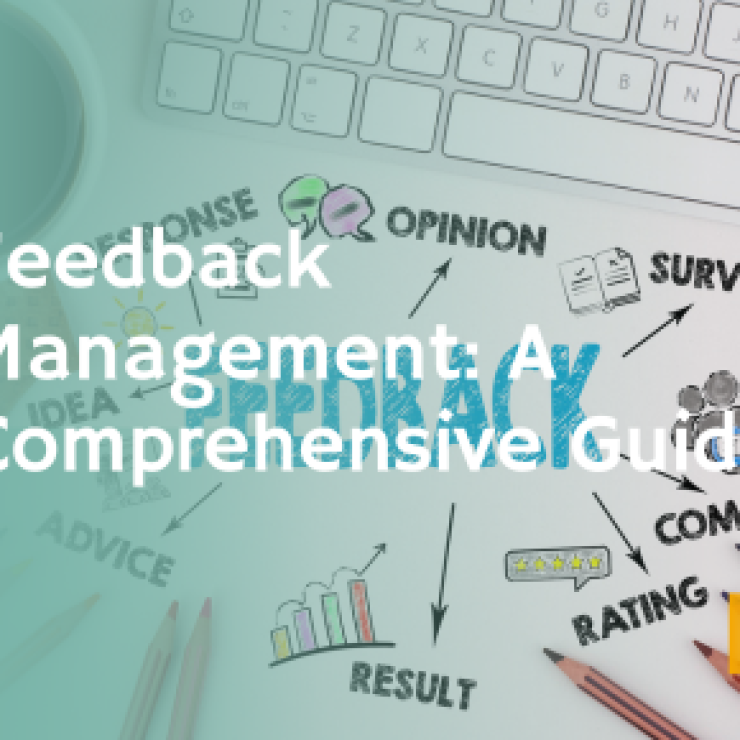In the world of business, the old adage “the customer is always right” has stood the test of time for a reason. Customer feedback is a critical component in shaping a company’s products or services, informing its marketing strategy, and improving overall customer satisfaction.
This precious resource enables businesses to make data-driven decisions, adapt to changing market trends, and ultimately thrive in competitive environments. But what if you are a startup or a new business without a customer base yet? How do you gather valuable feedback without customers to provide it?
This might seem like a paradox. After all, one might argue, how can there be customer feedback without customers? However, the solution to this conundrum lies in innovative and proactive strategies that seek to gather “hypothetical” customer feedback.
In this blog post, we’ll unravel the mystery behind collecting customer feedback even when you don’t have any customers. We’ll introduce you to several proven methods that can help you understand your potential customers, their needs, and their expectations, even before they make a purchase.
So, whether you’re in the idea stage, about to launch your product, or simply trying to enter a new market, this guide is for you. Let’s dive in!
The Importance of Customer Feedback
Customer feedback is much more than just opinions or views expressed by your customers about your product or service. It’s a goldmine of insights that can help businesses understand what they are doing right and what areas they need to improve.
When customers share their feedback, they provide you with a glimpse into their expectations, needs, and potentially unmet demands. This feedback can guide product development, highlight issues with user experience, help fine-tune marketing strategies, and even inform broader business decisions. In short, customer feedback is the compass that guides a business toward growth and success.
However, feedback isn’t just beneficial for the business. It’s also an important part of the customer experience. When customers see their feedback taken into account, it can increase their loyalty and trust in a company, enhancing the overall relationship.
The Conundrum for Businesses Without Customers
For startups or businesses entering new markets, a significant challenge is that they often don’t have existing customers to provide this valuable feedback. They might have a fantastic product or service idea, but without customers, it’s tough to validate if their idea meets market demands or solves real customer pain points.
New businesses are like ships about to embark on a journey with the goal of reaching the land of success. In this scenario, customer feedback serves as the North Star, guiding the ship and preventing it from straying off course. But what happens when the night sky is devoid of stars? Where does the ship head?
This is the conundrum for businesses without customers. They need feedback to validate their ideas and strategies, but they lack the customer base to provide it. So, how can they solve this problem? The answer lies in gathering hypothetical or anticipatory customer feedback.
As we explore this topic further, we will learn about various strategies and tools that can help gather valuable feedback without having an existing customer base.
The Importance of Hypothetical Customer Feedback
When we refer to “hypothetical customers,” we are essentially talking about potential customers. They are the individuals or businesses that fall into your target market but haven’t made a purchase or interacted with your product or service yet.
The insights derived from these hypothetical customers are what we term as “hypothetical customer feedback.” This feedback is crucial, especially for startups or businesses looking to venture into new markets, for several reasons:
Explanation of the Concept of Hypothetical Customers
Before a product or service is brought to the market, a business has an idea of who its ideal customer might be. This “ideal customer” is based on the business’s understanding of its product, the problem it solves, and the market it aims to serve.
These potential customers, or hypothetical customers, are the audience that a business hopes to convert into actual customers.
Role of Hypothetical Customer Feedback in the Initial Stages of Business
Hypothetical customer feedback is invaluable during the initial stages of a business or when launching a new product or service.
It helps in understanding the viability of your product or service, testing assumptions about your target market, and fine-tuning your product based on potential customer expectations.
This feedback helps validate or challenge your business assumptions, giving you a chance to pivot or adjust your strategy before investing more resources.
In a way, hypothetical customer feedback can serve as a preemptive strike, allowing you to tackle potential issues before they affect your business negatively.
Case Study: Successful Startups that Have Relied on this Method
Take the case of Dropbox, a widely successful file hosting service. Before developing a full-fledged product, Dropbox’s founder, Drew Houston, made a simple video demonstrating how the product would work.
This video was aimed at a hypothetical customer base – people who needed a simple, effective solution for file syncing.
The feedback and interest generated by this video validated Dropbox’s value proposition and gave the team valuable insights into the features that potential customers found most appealing.
The rest is history, as Dropbox is now a multi-billion dollar company with millions of users worldwide.
How to Identify Your Hypothetical Customers
Understanding who your hypothetical customers are is the first crucial step in gathering their feedback. This process involves defining your target market, using various tools and methods to identify potential customers, and creating customer personas.
Importance of Defining Your Target Market
Your target market is the specific group of people you want to reach with your products or services. These are the people who have a problem that your product or service solves.
Understanding your target market is pivotal because it allows you to focus your resources and marketing efforts on the audience that is most likely to convert into actual customers.
Defining your target market involves understanding the demographic, geographic, psychographic, and behavioral characteristics of your potential customers. This knowledge can shape every aspect of your business, from product development to marketing and sales strategies.
Tools and Methods to Identify Potential Customers
There are numerous ways to identify potential customers, and thanks to the digital age, many of these methods are readily accessible and easy to use.
Market research is one of the primary ways to identify potential customers. This can involve studying industry reports, analyzing competitors, conducting online surveys, or even interviewing people within your identified target market.
Social media platforms and search engines also offer powerful tools for market analysis. Features like Facebook Insights, Google Trends, and Keyword Planner can give you invaluable insights into the interests, behaviors, and needs of your potential customers.
Tips on Creating Accurate Customer Personas
Once you’ve identified your potential customers, the next step is to create customer personas. A customer persona is a semi-fictional representation of your ideal customer, based on market research and real data about your existing customers (if any).
When creating a customer persona, consider including customer demographics, behavior patterns, motivations, and goals. The more detailed you are, the better. These personas can then guide your product development and marketing efforts, ensuring they’re tailored to meet the needs of your potential customers.
Remember, personas are not rigid but fluid entities. They evolve as your business, market conditions, and customer preferences change. Regularly revisit and update your personas to ensure they remain representative of your target market.
In sum, the process of identifying hypothetical customers may seem daunting, but with the right approach and tools, it can provide invaluable insights for your business. These potential customers not only validate your business idea but also serve as a compass, guiding your business decisions and strategies.
Gathering Feedback Through Surveys
How to Design an Effective Survey
A well-designed survey can provide actionable insights into your hypothetical customers’ needs and preferences. Key elements of an effective survey include clear and concise questions, a logical flow, and a focus on your main objectives.
Use a mix of question types – such as multiple choice, Likert scales, and open-ended questions – to capture a wide range of data. Remember to keep it concise to respect your respondents’ time and increase the completion rate.
Identifying the Right Platforms for Conducting Surveys
Several platforms can be used to distribute your surveys, and the choice largely depends on where your hypothetical customers are. Online platforms like Google Forms, SurveyMonkey, and Typeform are popular options. Social media platforms can also be effective for reaching a broader audience.
Analyzing and Interpreting Survey Results
The data collected from surveys should be carefully analyzed to extract meaningful insights. Use statistical analysis to understand trends, correlations, and patterns in the data. Look for common themes in open-ended responses.
The aim is to understand the preferences, challenges, and demands of your hypothetical customers.
Using Social Media to Gather Feedback
Importance of Social Media in the Current Business Landscape
Social media platforms are a goldmine for businesses seeking customer insights. With billions of active users worldwide, these platforms allow businesses to reach a vast audience, engage with them directly, and gather invaluable feedback.
Tips on Using Social Platforms to Reach Potential Customers
To effectively use social media, it’s important to know where your hypothetical customers are most active – be it Facebook, Instagram, Twitter, LinkedIn, or others. Share engaging content, participate in relevant discussions, and use features like polls or Q&A to gather feedback.
Ways to Engage Users on Social Media for Feedback
Engagement is key to successful feedback collection on social media. Respond to comments, ask for opinions, and appreciate users for their input. Encouraging user-generated content is another great way to gather feedback and engage your audience.
Conducting Interviews and Focus Groups
The Role of Interviews in Collecting Customer Feedback
One-on-one interviews provide in-depth insights into the thoughts and feelings of your hypothetical customers. They allow for deeper exploration of responses, unlike surveys which can be somewhat restrictive.
How to Conduct a Successful Focus Group
A focus group is a moderated discussion among a small group of individuals. It provides qualitative data on user experience, perceptions, and preferences. A successful focus group is carefully planned and facilitated, with a clear set of objectives, and a diverse group of participants representative of your target market.
Analyzing the Feedback Gathered Through These Methods
Feedback from interviews and focus groups should be systematically analyzed to extract meaningful insights. Thematic analysis is often used in such cases to identify common themes or patterns that emerge from the data.
Leveraging User Testing Platforms
Introduction to User Testing Platforms
User testing platforms are online services that allow businesses to get their websites, apps, or products tested by users in their target market. Platforms such as Usertesting and Lookback offer this service.
How to Use These Platforms Effectively
To effectively use these platforms, define clear testing objectives, create tasks for testers that align with these objectives, and carefully choose your tester demographics to match your target market.
Analyzing the Feedback Collected via User Testing
Feedback from user testing often comes in the form of recorded video and audio sessions. These should be thoroughly reviewed and analyzed to understand user behaviors, challenges, and preferences.
Beta Testing: A Direct Route to Feedback
Explanation of Beta Testing
Beta testing involves releasing your product to a select group of users from your target market, before a full launch. This helps uncover any product issues and gather feedback on user experience.
Steps to Conduct a Successful Beta Test
To conduct a successful beta test, identify your objectives, recruit beta testers that match your target market, provide them with clear instructions, and have a system in place for collecting and managing feedback.
Interpreting and Integrating Feedback from Beta Testers
Feedback from beta testers should be carefully evaluated, and relevant findings should be integrated into the product before the full launch. This can result in a more polished product and a better user experience.
Leveraging Networking Events and Industry Gatherings
The Role of Professional Events in Getting Feedback
Professional events, industry gatherings, and trade shows offer valuable opportunities to gather feedback. They allow businesses to meet potential customers, industry experts, and competitors face-to-face, and learn from their opinions and experiences.
Tips on How to Approach and Engage in Meaningful Conversations
To gain valuable feedback at these events, it’s important to be open, approachable, and good at active listening. Ask open-ended questions, show genuine interest in people’s opinions, and engage in deeper, meaningful conversations.
Turning Feedback from Events into Actionable Insights
Feedback from these events should be recorded and analyzed systematically. Look for common trends, insights, and actionable suggestions. These insights can inform business strategies and decision making.
Conclusion
Collecting customer feedback when you don’t have any customers can seem like a daunting task. However, with the right tools and strategies, it’s not only possible but also incredibly fruitful.
From designing effective surveys and utilizing social media to conducting interviews, focus groups, and beta testing, several methods can help you gather valuable insights from hypothetical customers.
By leveraging these insights, you can shape your product, service, and business strategies to meet the demands of your target market, setting the stage for business success.




